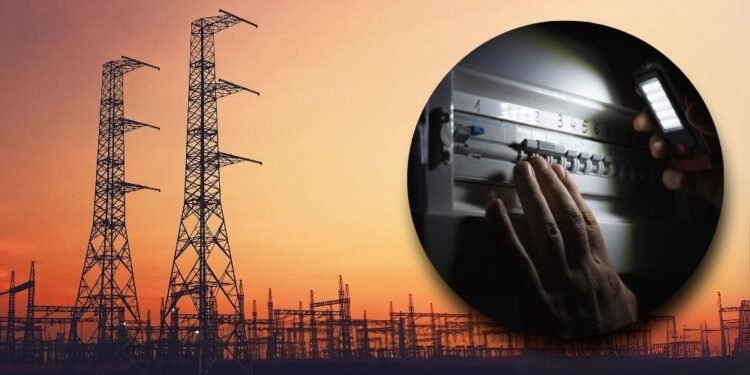In a country where you can order milk tea at midnight but can’t rely on having electricity when you wake up, something is clearly off.
Filipinos across the archipelago have grown used to flickering lights, sweating through brownouts, and getting hit with sky-high power bills — all while living in a supposedly fast-growing economy.
If power is essential to modern life, then the Philippines is still running on a backup generator, praying it doesn’t run out of gas.
The blackouts are no longer isolated incidents. They’re recurring, region-spanning, and frustrating millions from Luzon to Mindanao.
So what’s really going on behind the daily “scheduled maintenance” notices and surprise brownouts?
Outages happen because the system barely has room to breathe
The country’s power grid is constantly walking a tightrope. When even one major power plant goes offline, the whole system starts tipping. In April 2024 alone, at least 14 power generation units shut down unexpectedly, removing over 1,500 MW of supply and plunging parts of Luzon into rolling blackouts.
The root problem? There’s hardly any reserve.
Electricity demand has ballooned, especially during summer, but supply hasn’t kept pace. Luzon, for instance, has been placed on red alert multiple times since 2020 because several plants break down simultaneously, and there’s no cushion to absorb the hit.
The Philippines pays premium rates for unreliable energy
Here’s the punchline: Filipino consumers pay some of the highest electricity rates in Southeast Asia — averaging around $0.22 per kilowatt-hour in 2024, nearly double the cost in countries like Vietnam or Thailand.
Despite the price tag, breakdowns and brownouts remain part of daily life. That’s because fuel costs, forex fluctuations, and spot market volatility are passed directly to consumers.
The irony? High prices haven’t incentivized better infrastructure.
Instead, private players in the power sector often go into maintenance during peak seasons — a pattern that’s raised suspicion of deliberate collusion to game the market.
Islands like Panay and Mindoro are suffering the worst
In January 2024, the entire island of Panay — which includes tourist-favorite Boracay — went dark when several key plants went offline at the same time. More than 450 MW of capacity vanished, leaving the island with no choice but to rotate brownouts for several days.
In Occidental Mindoro, residents weren’t just sweating through blackouts — they were getting as little as 4 hours of electricity a day, forcing the local government to declare a state of calamity. Meanwhile, power was being supplied by expensive diesel-run generators that pushed electricity costs even higher.
Typhoons don’t just knock out power — they expose how fragile the grid really is
The Philippines gets hit by 20 typhoons a year, and each one is a stress test the power sector keeps failing.
Storms destroy transmission towers, flood substations, and knock out lines across multiple provinces. When Super Typhoon Odette struck in 2021, 284 towns in Visayas and Mindanao lost power — some for weeks.
Even minor storms can trip power lines or take out supply in vulnerable regions.
And because maintenance is reactive instead of preventive, these natural events keep setting back progress — revealing how little the country has invested in climate-proofing its power infrastructure.
Grid mismanagement adds insult to injury
It’s not just the power plants — the National Grid Corporation of the Philippines (NGCP) has come under fire for delayed upgrades and poor crisis response. In 2024, a major blackout in Western Visayas escalated because NGCP failed to use load-dropping protocols that could’ve limited the damage. Even President Marcos Jr. called out the operator for failing to act when the grid started to collapse.
Some lawmakers have floated the idea of taking back control of the grid — which is partly owned by China’s state-owned power corporation — if reliability doesn’t improve. In the meantime, consumers are left guessing whether the next blackout is due to technical issues, bad planning, or plain negligence.
When the power’s out, the economy grinds to a halt
The effects aren’t just inconvenient — they’re costly. During the Panay blackout in 2024, Iloilo City lost ₱1.5 billion in just three days. Local businesses, especially in the service sector, were crippled. Restaurants had to throw out spoiled food, banks shut down temporarily, and workers were sent home.
This is part of a bigger pattern. Every outage — no matter how brief — disrupts education, healthcare, and public safety.
Internet networks crash, ATMs go offline, and vaccine refrigerators lose temperature control. The poorest households, who can’t afford generator backups, suffer the most.
Filipinos aren’t just annoyed — they’re furious
Filipinos have taken their rage to the only place with a reliable power source: the internet.
Social media has become a sounding board for every failed restoration promise and every “scheduled maintenance” that lasts for hours.
In 2023, the hashtag #NoToNegligence trended after back-to-back blackouts in Panay. Locals shared photos of businesses shuttered in broad daylight and students doing homework by candlelight. The mayor of Iloilo City even demanded that Congress hold hearings in the city so lawmakers could “feel the indignation” of his constituents.
Even top tourist islands weren’t spared. In 2025, Boracay and Siargao both suffered outages during peak season, drawing sarcastic posts like “Welcome to Boracay: white sands, no power.”
And while memes soften the blow, the frustration is real — residents are done laughing about power outages that have become routine.
The government knows it can’t keep putting out fires forever
The Marcos administration has begun rolling out both quick fixes and longer-term plans. Emergency power barges have been sent to disaster-hit provinces. The Department of Energy is pushing electric co-ops to modernize and expand supply contracts. The Visayas-Mindanao grid interconnection is finally being completed to improve electricity sharing between islands.
There’s also an aggressive push for renewables — with solar and wind projects now receiving tax incentives and fast-track permits. The government wants to increase renewable energy’s share to 35% by 2030, up from 22% today.
But even bigger is the bold move to explore nuclear power, with talks of either reviving the dormant Bataan plant or building modular nuclear reactors to supply clean baseload power by 2032. It’s ambitious — and controversial — but shows the scale of options now on the table.
The light at the end of the tunnel needs real power behind it
The Philippines doesn’t lack engineers, capital, or sunshine. It lacks political will, planning, and accountability.
Power outages in 2025 aren’t just about a few broken lines — they’re about a system stretched thin by years of underinvestment and reactive governance.
The good news? Public outrage is forcing the issue. There’s now national attention, stronger leadership, and actual movement on reforms. Whether that translates into fewer blackouts — and lower bills — remains to be seen.
For now, Filipinos still ask the same question every day: Will there be power later? And if not — who’s to blame?












